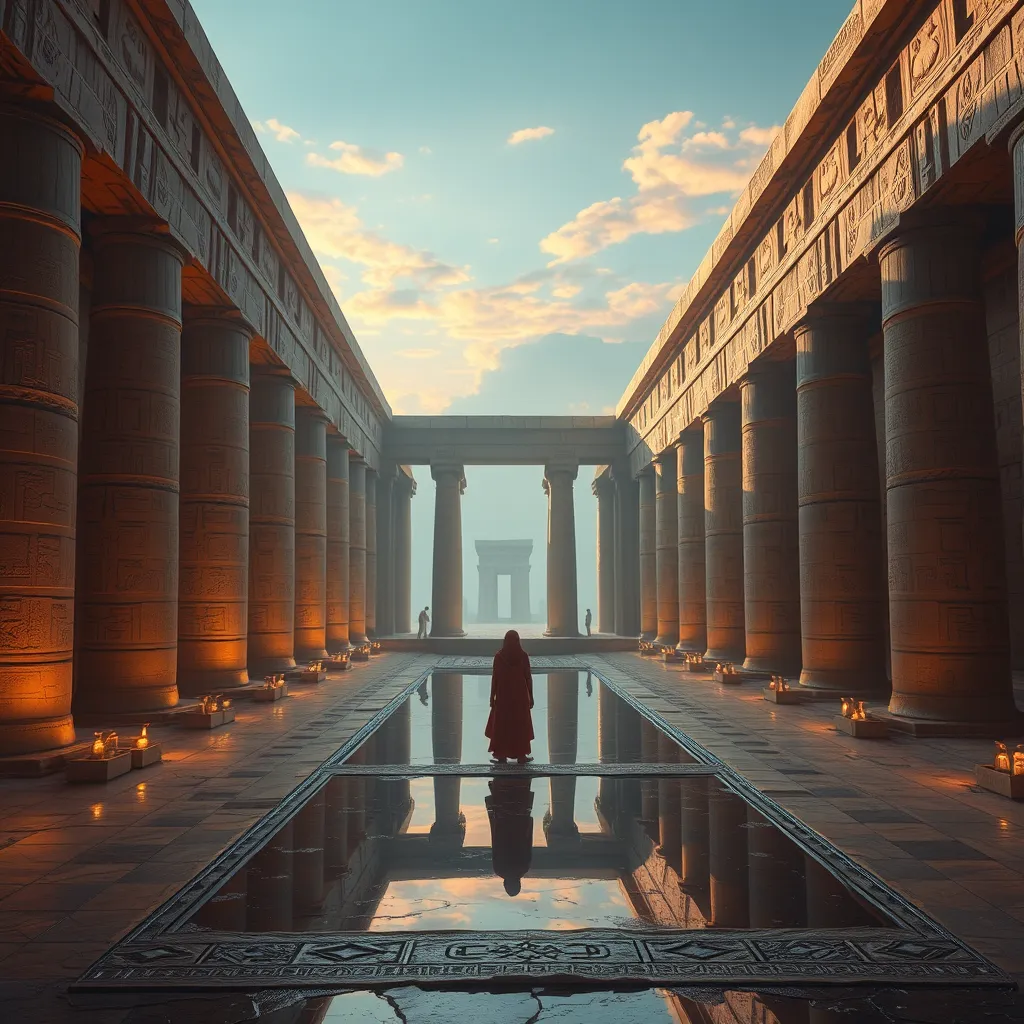The Duat: A Reflection of the Human Condition
I. Introduction
The Duat, an integral aspect of ancient Egyptian mythology, represents the realm of the dead, a complex underworld where souls navigate their journey after death. This mystical land is not merely a place of darkness; it embodies the rich tapestry of ancient Egyptian beliefs about life, death, and morality.
Understanding the Duat is crucial for gaining insight into how ancient Egyptians viewed existence and the afterlife. It serves as a profound reflection of the human condition, exploring themes of life, death, morality, and the afterlife itself.
II. The Concept of the Duat
At its core, the Duat is the Egyptian underworld, a mystical realm that the deceased must traverse. The Duat is often described as a complex landscape filled with rivers, mountains, and fields, representing the journey of the soul. The Duat is governed by key deities, each playing a significant role in guiding and protecting souls.
- Osiris: The god of the afterlife and resurrection, Osiris symbolizes rebirth and the eternal cycle of life and death.
- Anubis: The god of mummification and the protector of graves, Anubis oversees the process of embalming and the journey through the Duat.
The symbolism of the Duat extends beyond a mere afterlife; it represents the cyclical nature of existence, mirroring the agricultural cycles that were central to ancient Egyptian life. The Duat reflects the inevitability of death while also offering hope for rebirth and renewal.
III. The Journey Through the Duat
The journey through the Duat begins after a person’s death, where the soul embarks on a perilous voyage. This journey is fraught with challenges and trials that test the soul’s worthiness.
One of the most significant events in this journey is the Weighing of the Heart ceremony. During this ceremony, the heart of the deceased is weighed against the feather of Ma’at, the goddess of truth and justice. This moment is crucial, as it determines the fate of the soul:
- If the heart is lighter than the feather, the soul is deemed worthy and allowed to enter the Field of Reeds, a paradise where one can live eternally.
- If the heart is heavier, it is devoured by Ammit, a fearsome creature, resulting in the soul’s permanent destruction.
The trials faced in the Duat serve as metaphors for the struggles of life. These challenges reflect the moral and ethical dilemmas that individuals encounter, underscoring the ancient Egyptians’ belief in living a virtuous life.
IV. Moral and Ethical Reflections
The Duat acted as a moral compass for ancient Egyptians, guiding their actions and decisions throughout their lives. The concept of Ma’at—representing truth, balance, and order—was paramount in this context. Adhering to the principles of Ma’at was essential for ensuring a favorable judgment in the afterlife.
In this framework, the Duat influenced ethical behavior during one’s lifetime by instilling a sense of accountability. Individuals were motivated to act justly and maintain harmony within their communities, knowing that their actions would have consequences in the afterlife.
V. The Duat in Art and Literature
The Duat has been depicted in various forms of ancient Egyptian art and literature, showcasing its significance in their culture. Artistic representations often illustrate the journey of the soul, the Weighing of the Heart, and the vibrant landscapes of the Duat.
In writings such as the Pyramid Texts and Coffin Texts, the Duat is described in elaborate detail, providing insights into the beliefs surrounding death and the afterlife. These texts served as guides for the deceased, offering spells and incantations to navigate the challenges of the underworld.
Moreover, the Duat played a crucial role in shaping cultural narratives and identity, reinforcing the values and beliefs that defined ancient Egyptian society.
VI. The Human Condition Explored Through the Duat
The themes of fear and hope regarding mortality are profoundly explored through the Duat. For ancient Egyptians, the afterlife was a source of both anxiety and aspiration, as they grappled with the uncertainty of what awaited them beyond death.
The Duat reflects human desires for legacy and immortality, symbolizing the innate need to be remembered and to achieve a form of existence beyond physical death. This quest for immortality is evident in the elaborate burial practices and monumental architecture, such as the construction of pyramids.
Furthermore, the intersection of suffering and enlightenment is a recurring theme in the journey of the soul through the Duat. The trials faced by the deceased serve as metaphorical representations of the struggles encountered in life, ultimately leading to self-discovery and transformation.
VII. Modern Interpretations of the Duat
In contemporary discussions of death and the afterlife, the Duat remains relevant, offering insights into how we perceive mortality. Modern interpretations often draw parallels between the Duat and other cultural beliefs about the afterlife, highlighting the universal themes of life, death, and rebirth.
Comparing the Duat to beliefs in other cultures reveals shared human experiences regarding the afterlife, such as the concepts of judgment, reward, and punishment. The Duat’s influence can also be seen in modern literature, film, and psychology, where themes of the afterlife and moral dilemmas continue to resonate.
VIII. Conclusion
In summary, the Duat serves as a profound reflection of the human experience, encompassing themes of life, morality, and the afterlife. It offers a framework for understanding ancient Egyptian beliefs and provides insights into how these beliefs continue to shape our views on life and death today.
The enduring significance of the Duat lies in its exploration of the human condition, reminding us of the complexities of existence and our eternal quest for meaning and understanding in the face of mortality.





